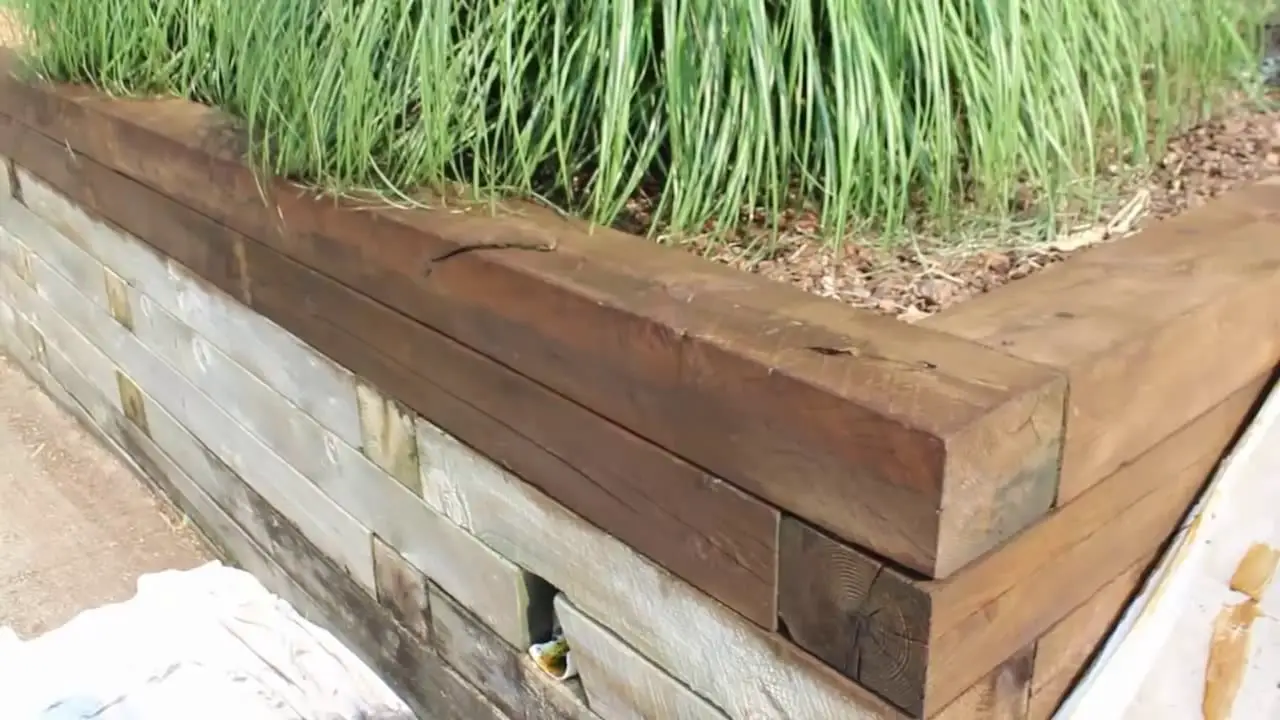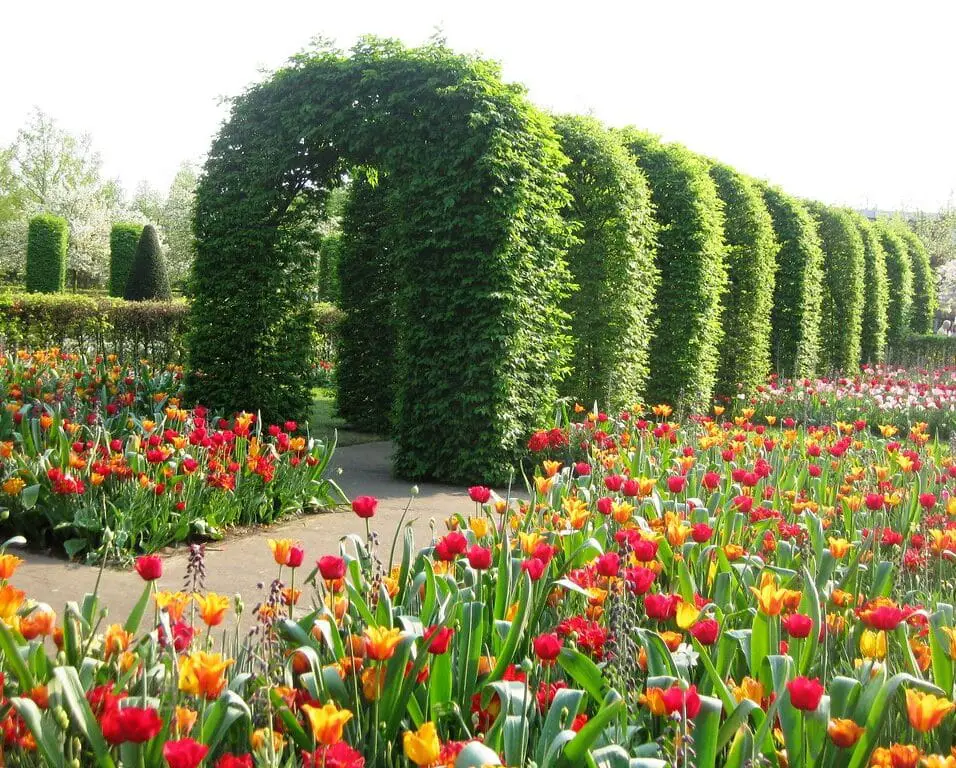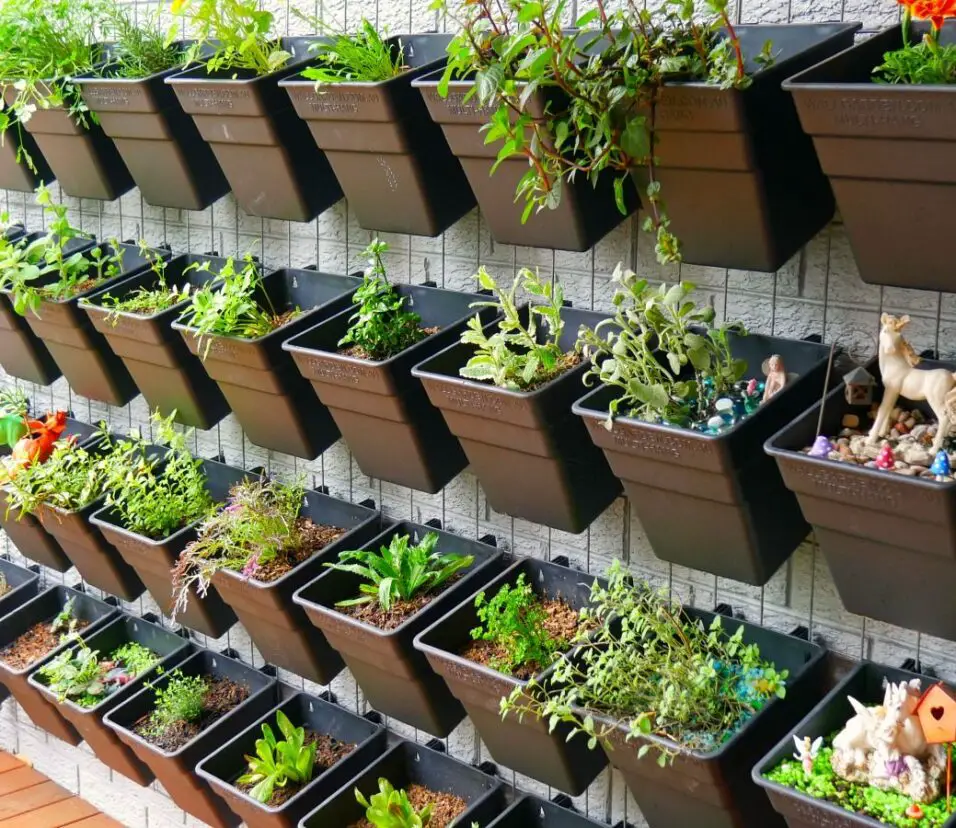Is Heat Treated Wood Safe For Gardening
Introduction
Is Heat Treated Wood Safe For Gardening: Heat treated wood has become increasingly popular in gardening and landscaping projects due to its durability and resistance to decay. However, there are concerns about the safety of using heat treated wood in garden safe, particularly when it comes to growing edible plants. Heat treated wood, also known as thermally modified wood, is a type of lumber that has undergone a heating process to improve its properties. The wood is heated to high temperatures, typically between 400 and 450 degrees Fahrenheit, in a controlled environment. This process alters the wood’s cellular structure, making it more resistant to moisture, insects, and decay. As a result, heat treated wood has a longer lifespan compared to untreated wood, making it an attractive option for outdoor projects.
While heat treated wood offers numerous benefits, there are concerns about the potential release of harmful chemicals during the heating process. Some studies have suggested that certain chemicals, such as acetic acid and furfural, may be released from the wood when it is heated at high temperatures. These chemicals could potentially leach into the soil and be absorbed by plants, raising concerns about their safety for edible gardening.
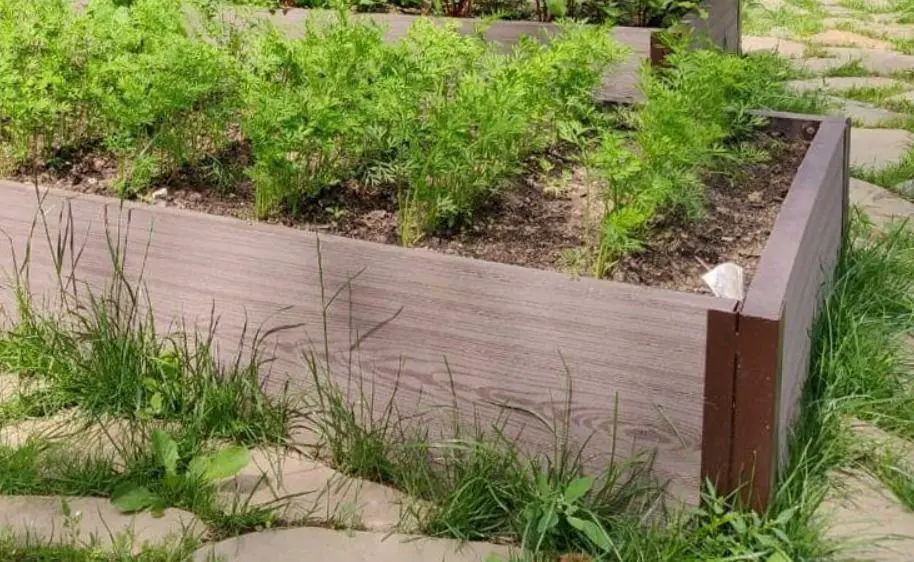
Can I use treated wood in a garden?
The chemicals in the wood can leach into soil and in turn, be taken up by plants. Root crops like carrots and potatoes take up more chemicals than leafy vegetables. Pressure-treated lumber is not recommended for raised beds for growing vegetables.
Yes, you can use treated wood in a garden, but it is important to consider a few factors before doing so. Treated wood is wood that has been chemically treated to protect it from decay, insects, and other forms of damage. It is commonly used for outdoor projects such as decks, fences, and raised garden beds. However, there are some considerations to keep in mind when using treated wood in a garden.
It is important to choose the right type of treated wood for your garden.
Secondly, it is important to be aware of any potential risks associated with using treated wood in a garden. Some treated wood products may contain chemicals that can leach into the soil and potentially be absorbed by plants. This can be a concern if you are growing edible plants in your garden.
Additionally, it is important to consider the lifespan of treated wood in a garden. While treated wood is designed to be durable and long-lasting, it will eventually break down over time. This can result in the release of chemicals into the soil.
Is MCA safe for garden beds?
Safe for All
ProWood MCA-treated wood products may be used in or around plants and produce gardens. Copper is a safe biocide used internationally to protect crops from disease.
Timber is treated with MCA, or Micronized Copper Azole, to prevent rotting and insect damage. Garden beds and other outdoor applications benefit from its long-term rot and pest resistance. However, utilizing MCA-treated wood in garden beds, especially for edible plants, has raised safety concerns.
MCA-treated wood may leak copper into the soil, a major problem. Copper is a micronutrient needed for plant growth, but too much can be hazardous. MCA-treated wood may leach copper into the soil, harming plants, according to some research.
MCA-treated wood has a minimal copper leaching risk. MCA copper is bonded to wood fibers and difficult to leach. MCA-treated wood releases little copper, which does not harm plants or the environment, according to studies.
MCA-treated wood releases mostly copper oxide, which is less soluble and hazardous than other copper forms. This significantly decreases plant danger.
To guarantee safety, government organizations like the EPA restrict MCA-treated wood in flower beds. These guidelines safeguard health and the environment.
Can heat-treated wood be used outdoors?
Heat treatment or thermal modification of wood became popular several decades ago. The main idea behind the heat treatment of wood is to improve its overall properties. Thermally modified wood has a great market for exterior use, such as decking and siding with an excellent service life.
Yes, heat-treated wood can be used outdoors. Heat treatment is a process that involves subjecting wood to high temperatures, typically between 180 and 230 degrees Celsius, in order to improve its durability and resistance to decay. This process alters the chemical and physical properties of the wood, making it more suitable for outdoor use.
One of the main benefits of using heat-treated wood outdoors is its increased resistance to moisture. Heat treatment reduces the wood’s ability to absorb water, which helps to prevent rotting and decay. This makes it an ideal choice for outdoor applications such as decking, fencing, and garden furniture.
Enhanced Dimensional Stability of Heat-Treated Wood
In addition to its improved moisture resistance, heat-treated wood also has enhanced dimensional stability. This means that it is less likely to warp, twist, or shrink when exposed to changes in temperature and humidity. This makes it a reliable option for outdoor structures that are constantly exposed to the elements.
Furthermore, heat-treated wood is also more resistant to insect infestation. The high temperatures used during the treatment process kill off any insects or larvae present in the wood, reducing the risk of damage from pests. This makes it a particularly attractive choice for outdoor projects in areas where termites or other wood-boring insects are prevalent.
What kind of wood is best for raised gardens?
Picking the best wood type for your garden box is an important decision. You want to choose a material that is durable, safe for plants, and affordable. The best lumber options for raised garden beds include cedar, redwood, Douglas fir, black locust, pine, and cypress.
When it comes to building raised gardens, choosing the right type of wood is crucial for the success and longevity of your garden. The type of wood you select will determine how well it withstands the elements, resists rot and decay, and holds up over time. With so many options available, it can be overwhelming to decide which kind of wood is best for raised gardens.
Cedar is often considered the top choice for raised garden beds. It is naturally resistant to rot, decay, and insect damage, making it a durable and long-lasting option. Cedar also has a beautiful natural color and aroma, adding to the overall aesthetic appeal of your garden. Additionally, cedar is a lightweight wood, making it easy to work with and transport.
Redwood for Raised Gardens: Natural Resistance and Lasting Beauty
Redwood is another popular choice for raised gardens. Like cedar, it is naturally resistant to rot, decay, and insect damage. Redwood is known for its rich, reddish-brown color, which can add warmth and beauty to your garden. It is also a durable wood that can withstand the elements and last for many years.
Pine is a more affordable option for raised gardens. While it is not as naturally resistant to rot and decay as cedar or redwood, it can still be a suitable choice if properly treated and maintained. Pine is a versatile wood that is readily available and easy to work with. With the right precautions, such as applying a protective finish or lining the bed with plastic, pine can be a cost-effective and functional option for raised gardens.
Other types of wood, such as cypress and oak, can also be used for raised gardens. However, they may require more maintenance and treatment to ensure their longevity. It is important to consider factors such as cost, availability, durability, and resistance to rot and decay when choosing the best type of wood for your raised garden.
What type of wood is safe for vegetable garden?
Naturally pest-resistant woods, like cedar and redwood are ideal for vegetable gardens because they do not contain chemicals that can be harmful if ingested.
When it comes to building a vegetable garden, choosing the right type of wood is crucial. Not all woods are safe for use in a vegetable garden, as some may contain chemicals or toxins that can leach into the soil and potentially harm your plants. Therefore, it is important to select a wood that is both durable and safe for growing vegetables.
Cedar wood is one of the most popular choices for vegetable gardens. It is naturally resistant to rot and decay, which makes it a long-lasting option for garden beds. Additionally, cedar wood contains natural oils that act as a deterrent to insects and pests, reducing the need for chemical pesticides. This makes it an ideal choice for organic gardeners who want to avoid using harmful chemicals in their vegetable gardens.
Redwood is another type of wood that is commonly used in vegetable gardens. Like cedar, redwood is naturally resistant to rot and decay, making it a durable option for garden beds. It also has a beautiful natural color and grain pattern, which can add aesthetic appeal to your garden. However, redwood is generally more expensive than cedar, so it may not be the best choice for gardeners on a tight budget.
Pressure-treated wood is a controversial option for vegetable gardens. While it is treated with chemicals to prevent rot and decay, some pressure-treated woods may contain harmful chemicals such as arsenic or copper. These chemicals can leach into the soil and potentially be absorbed by your plants. If you choose to use pressure-treated wood, make sure to select a type that is labeled as safe for use in vegetable gardens.
Considerations for Untreated Pine in Vegetable Gardens
Untreated pine is a more affordable option for vegetable gardens. However, it is important to note that untreated pine is not as durable as cedar or redwood and may need to be replaced more frequently. Additionally, pine is more susceptible to rot and decay, so it may not be the best choice for gardeners in wet or humid climates.
Compared to regular wood, heat treated wood has several distinct differences. Firstly, it has a lower moisture content, which reduces the risk of warping, cracking, and shrinking. This makes it more dimensionally stable and less prone to damage caused by changes in humidity. Secondly, heat treated wood has increased resistance to decay and insect infestation, making it a more durable option for outdoor applications. Lastly, the heat treatment process darkens the color of the wood, giving it a rich, attractive appearance.
Are there any potential health risks associated with using heat treated wood in gardening?
When it comes to using heat treated wood in gardening, there are generally no significant health risks to be concerned about. The heat treatment process involves heating the wood to a high temperature, which effectively eliminates any harmful organisms or chemicals that may be present. This means that heat treated wood is generally safe to use in contact with soil, plants, and vegetables.
However, it is important to note that some heat treated wood products may be treated with additional chemicals or preservatives to enhance their performance. In such cases, it is crucial to check the product specifications and ensure that any chemicals used are safe for gardening purposes. It is also recommended to avoid using heat treated wood that has been painted or stained, as the paint or stain may contain harmful substances that can leach into the soil.
Are there any potential health risks associated with using heat treated wood in gardening?
High temperatures are used to treat wood for durability and pest and rot resistance. Heat treatment changes its physical and chemical properties, making it different from conventional wood.
Use of heat-treated wood in gardening is generally safe. The wood is treated at high temperatures to eradicate pests and insects, minimizing garden infection risk. Heat treatment also removes moisture from wood, preventing rot and decay.
However, some heat-treated wood items may contain dangerous chemicals or preservatives if consumed or inhaled. Therefore, handle heat-treated wood carefully and avoid using it for food plants or in situations where children or dogs may come into contact with it. Heat-treated wood should be handled with gloves and a mask to avoid health concerns.
Does heat treated wood affect the quality or fertility of the soil in a garden?
Heat treated wood, also called thermally modified wood, is heat-treated to increase its longevity and decay resistance. Wood is heated to 180–220 degrees Celsius in a controlled environment for this operation. The chemical and physical qualities of heat-treated wood make it more stable and durable than conventional wood.
Heat-treated wood affects garden soil quality and fertility in several ways. Treated wood is safe for gardening because it is chemical-free. Heat-treated wood is natural and environmentally friendly, unlike pressure-treated wood, which contains arsenic or copper.
Heat-treated wood has less moisture than conventional wood, which can benefit plant soil. Too much soil moisture can cause waterlogging and stunt plant growth. Heat-treated wood has less moisture, improving drainage and soil health.
Are there any specific precautions or guidelines to follow when using heat treated wood in gardening?
Gardening with heat-treated wood requires some considerations. First, make sure your heat-treated wood is certified and fulfills regulations. See the HT mark to know the wood has been treated and is safe for gardening.
Avoid painting or staining heat-treated wood because these coatings may leach toxic chemicals into the soil. Avoid dangers by using raw heat-treated wood.
Additionally, your garden’s heat-treated wood should be frequently checked. Deteriorating wood can be dangerous and should be replaced. Garden structures last longer and are safer with regular maintenance and inspection.
Are there any alternative materials or methods that can be used instead of heat treated wood for gardening purposes?
Yes, there are several alternative materials and methods that can be used instead of heat treated wood for gardening purposes. One popular alternative is using composite lumber, which is made from a combination of wood fibers and recycled plastic. Composite lumber is highly durable, resistant to rot and insects, and does not require any treatment or maintenance. It is also available in a variety of colors and finishes, allowing for customization to match any garden aesthetic.
Another alternative is using natural stone or concrete blocks to create raised beds or garden borders. These materials are long-lasting, low-maintenance, and provide a sturdy structure for plants. They also add a decorative element to the garden and can be easily arranged in different shapes and sizes.
Additionally, some gardeners choose to use untreated wood, such as cedar or redwood, which naturally resists rot and insects. While untreated wood may not have the same level of durability as heat treated wood or composite lumber, it can still be a viable option for smaller gardening projects or temporary structures.
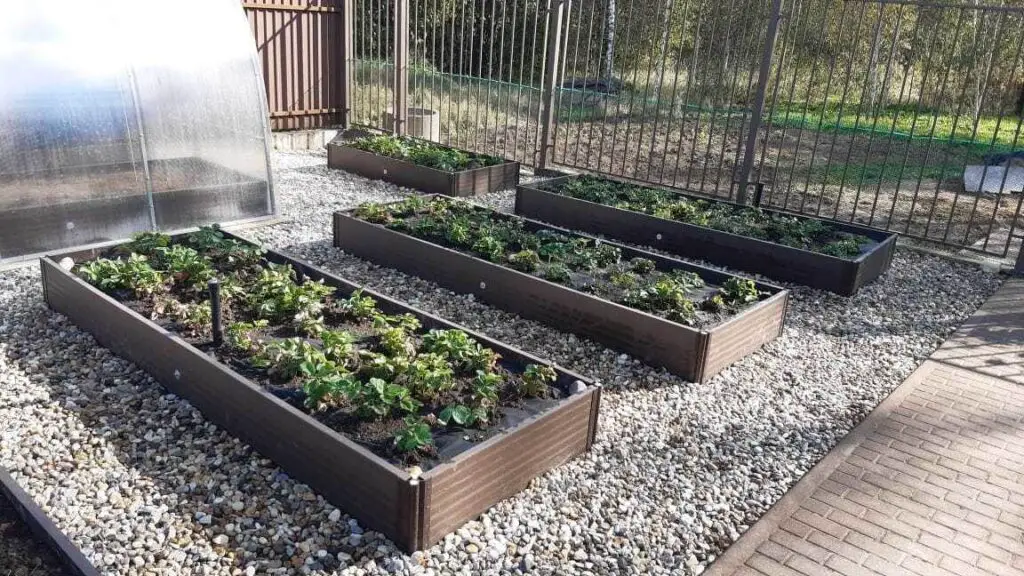
Conclusion
Heat treated wood can be a safe option for gardening purposes. Heat treatment is a process that involves subjecting the wood to high temperatures, which helps to eliminate pests, fungi, and other harmful organisms that may be present in the wood. This treatment also helps to reduce the moisture content of the wood, making it more resistant to decay and rot. As a result, heat treated wood safe can be a durable and long-lasting option for garden beds, raised planters, and other gardening structures.
One of the main advantages of using heat treated wood in gardening is that it is free from harmful chemicals. Unlike pressure treated wood, which is treated with chemicals such as arsenic and copper, heat treated wood does not contain any toxic substances that can leach into the soil and potentially harm plants or animals. This makes it a safer choice for organic gardening and for growing edible plants.
Heat treated wood is also more environmentally friendly compared to other types of treated wood. The heat treatment process does not involve the use of chemicals or preservatives, reducing the impact on the environment. Additionally, heat treated wood is often sourced from sustainably managed forests, further minimizing its environmental footprint.
However, it is important to note that not all heat treated wood is created equal. It is crucial to ensure that the wood has been properly heat treated and meets the necessary standards and certifications. This can help to guarantee its safety and effectiveness for gardening purposes. Additionally, it is recommended to avoid using heat treated wood that has been painted or stained, as these coatings may contain chemicals that can be harmful to plants.



